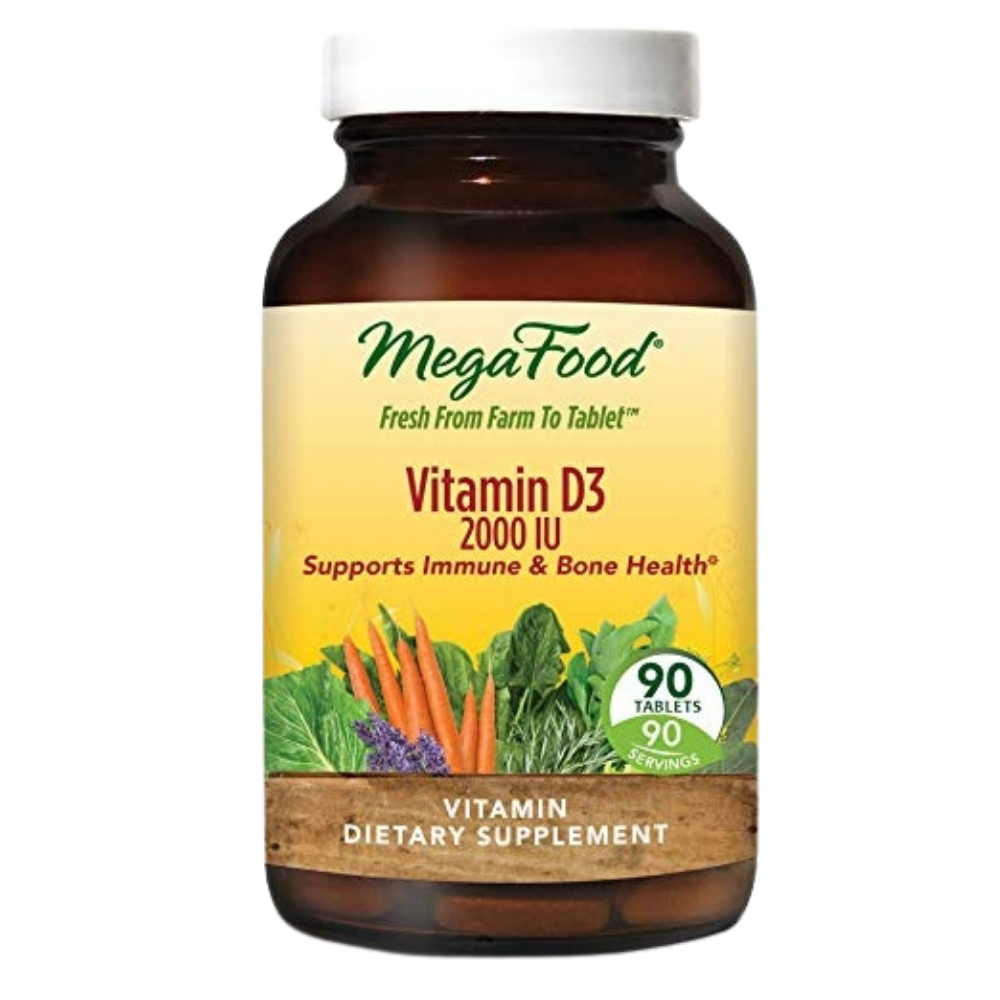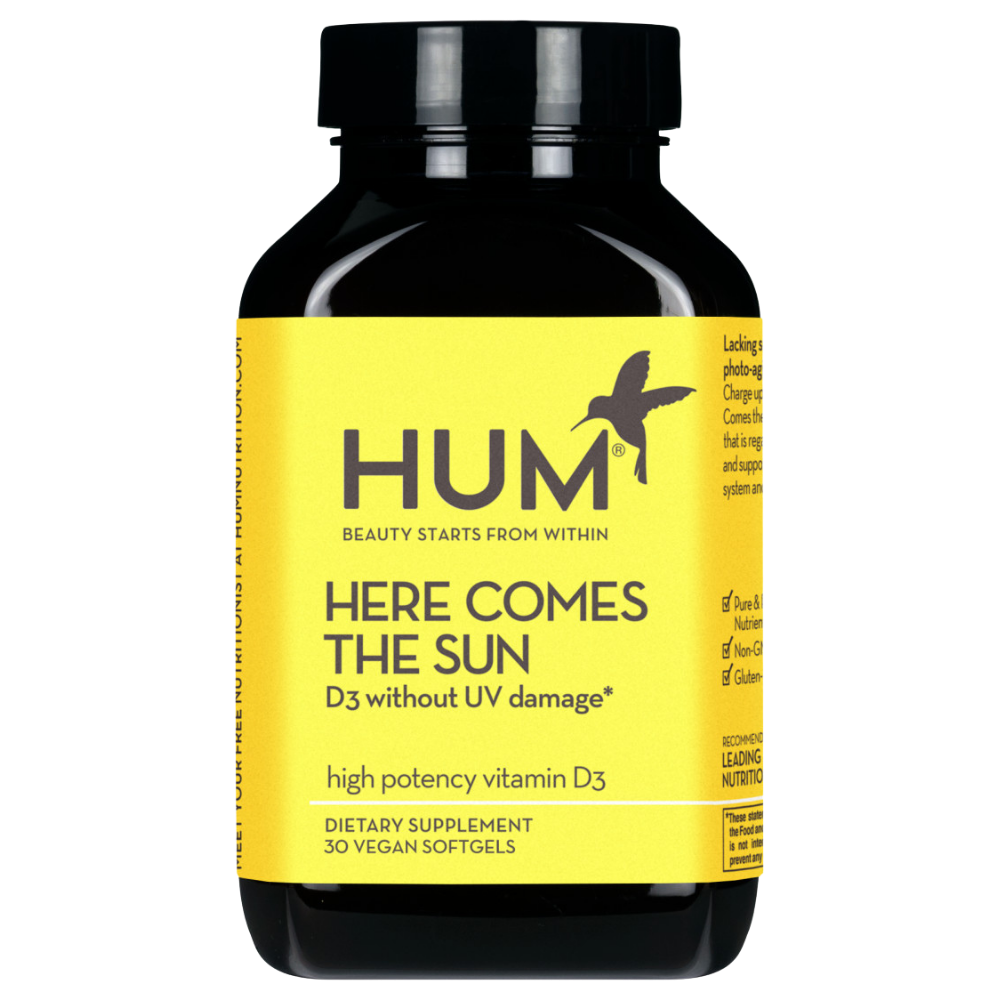Do You Need a Vitamin D Supplement?
This post contains affiliate links, through which we may earn a small commission if you choose to purchase, at no additional cost to you. We only share products or services we personally use & recommend!
Vitamin D is technically not a vitamin, but we won’t dwell on that 😉—it’s one of the most essential “vitamins” needed to support proper bodily functioning! So, let’s dive into why vitamin D is so important, and how to tell if we’re getting enough of this important nutrient (or if we might need to supplement for it):
Why we need vitamin D
Vitamin D is a powerhouse nutrient responsible for the proper functioning of many bodily systems. For example, it:
regulates levels of calcium in the bloodstream and is essential to bone formation
strengthens immunity and protects the body from illness and infection
reduces inflammation and autoimmune response
improves mood and has been shown to improve symptoms of depression
defends cells against cancer (vitamin D deficiency is linked to numerous cancers, including some of the most common—breast, prostate, lung, colorectal, leukemia, bladder, pancreatic and lymphoid just to name a few!)
A brief history of sun exposure & vitamin D
Historically, the human body has synthesized vitamin D directly from sunlight. This makes sense: we’re pretty hairless and, until recently, spent significant time each day outside. Most of our human evolution occurred around the equator where there was plenty of sunlight year-round, and even after branching off to northern latitudes, a notable adaptation occurred: because melanin (the pigment in skin that gives it color) protects skin cells from sun exposure and slows vitamin D production, early humans living in northern, less sun-intense climates developed lighter skin to maximize vitamin D production.
Very few food sources contain vitamin D, the main exception being the liver of fatty fish. It’s no coincidence that indigenous Arctic populations, living without strong sunlight much of the year, have historically consumed plenty of vitamin D-rich marine foods.
Now, modern lifestyle factors are significantly reducing our levels of vitamin D: we spend our days inside, cover ourselves in clothing and sunscreen when we do go outside, and eat a primarily Western diet that does not contain food sources rich in vitamin D.
So am I vitamin D deficient?
Chances are: yes. Vitamin D is one of the most prominent vitamin deficiencies in modern society.
Vitamin D deficiency is commonly known for causing rickets (soft bones in children), but there are many other symptoms that often go unnoticed and undiagnosed, as they can be subtle, or presumed to be caused by something else.
Symptoms of vitamin D deficiency
Some of the common symptoms of vitamin D deficiency include:
Getting sick regularly or having trouble fighting off infections
Fatigue
Depression
Slow healing of wounds
Bone loss (osteoporosis) and increased risk of fractures
Hair loss
Increased reports of pain, including muscle pain and back pain
If you think your vitamin D levels may be low, ask your doctor to test them. If your levels are on the low end, there are several ways to raise them with lifestyle and nutrition.
Note: Though blood levels are considered “adequate” at 20 ng/ml, many health experts suggest aiming for levels greater than 30 ng/ml for optimum health and disease prevention. The NIH recommends a daily intake of 400-800 IU of vitamin D depending on age, but many health professionals recommend getting considerably more than that—even up to 10,000 IU daily. (Studies show it’s not toxic until over 40,000 IU daily for months.)
Best natural sources of vitamin D
Though there aren’t a ton of natural sources of the essential nutrient vitamin D, here are the primary places we get it:
Sunlight
Likely the best way to get healthy doses of vitamin D is via natural sunlight.
How much sun exposure you need varies depending on your skin color, strength of sun (location, time of year and time of day), cloud cover, pollution, and even what your diet is like. But, as reference, a light-skinned individual typically needs 20-30 minutes of midday sun to produce a requisite amount of vitamin D daily. Because more melanin = more natural sun protection, people with darker skin need more sun exposure to produce the same amount of vitamin D—up to 2-2.5 hours for the same effect.
Sun damage and skin cancer are real concerns, and sufficient sun exposure should not result in burning. People with very light skin or those not used to being in the sun regularly will need to gradually work up to the recommend exposure.
A few other notes on obtaining vitamin D from sunlight:
Vitamin D is synthesized from UVB rays, which do not penetrate glass—so while sitting in the sunlight in a sunny window certainly has other benefits (it’s good for your mood, for one!), it’s not actually resulting in vitamin D synthesis.
The more skin exposed to the sun, the more vitamin D synthesis occurs. So, if you spend time outside with only your face and hands exposed, you’ll produce less vitamin D than if you were laying out in a bathing suit.
UVB tanning beds are potentially a method for obtaining vitamin D, though they should only be used very carefully and minimally—it takes considerably less exposure in a tanning bed to achieve the same effect as natural sunlight.
Your body can store vitamin D for weeks or months at a time, so experiencing some period of time without sun may not radically reduce your blood levels.
In sum: for most of human history, sunlight was our best source of vitamin D, and that still holds true today. But before you rush to the tanning bed, let’s cover a few other sources for supplementing less-than-adequate sun exposure in our modern lifestyles:
Food sources of vitamin D
Though there are not many food sources containing sufficient levels of vitamin D, there are a few specific foods high in this nutrient, most of which have been used for centuries by populations without access to year-round sunshine. Without any sunlight you’d have to eat these foods in large quantities daily to get enough vitamin D… but occasional consumption can also supplement moderate sunlight exposure.
The best food sources of vitamin D are:
Fatty fish: salmon, sardines, herring, tuna
Oysters and shrimp
Egg yolks (Note: Eggs from pasture-raised chickens—those roaming outside in sunlight—contain 3-4 times the vitamin D as those raised indoors. Look for “pasture-raised” on the label, which is not the same as “cage-free.”)
Mushrooms
Cod liver oil
Fortified foods: cow’s milk, soy milk and cereals are often fortified with vitamin D, though usually at lower levels than natural sources
There are two types of vitamin D obtained from food sources: D2, found in plants and yeasts, and D3, found in animal products. D3 is more effective at raising blood levels of vitamin D.
Vitamin D supplement
If your lifestyle and diet prevent regular, sufficient sun exposure or food sources of vitamin D, it is possible to improve your levels with a vitamin D supplement. Your doctor is the best source for determining your ideal daily intake, but in general we aim for up to 4,000 IU daily.
Remember, animal sources tend to be a bit better at raising blood levels of vitamin D than plant and yeast sources.
Our favorite vitamin D supplements
Here are a few of our favorite vitamin D supplements:
FOUR WELLNESS TIP
Talk to your doctor about testing your vitamin D levels and, as needed, supplement with the methods above.











